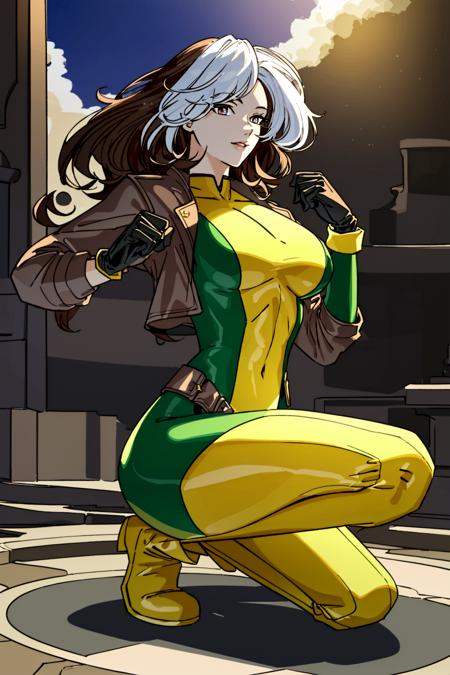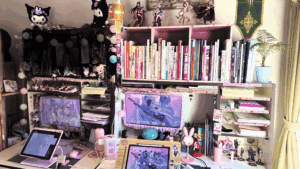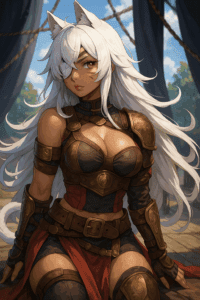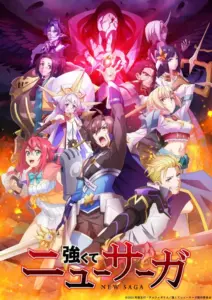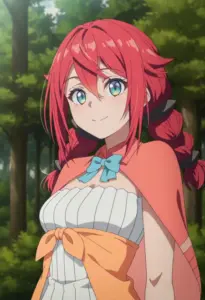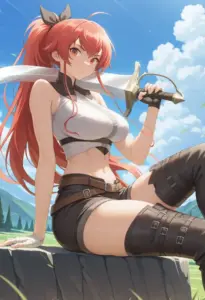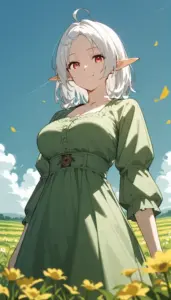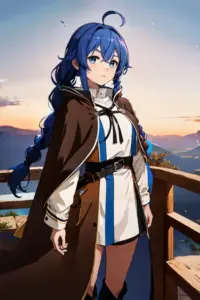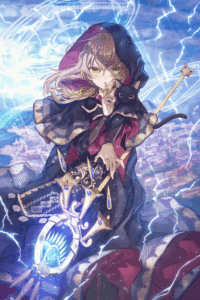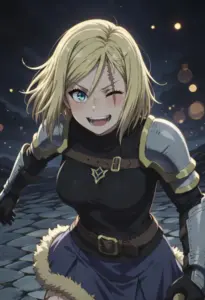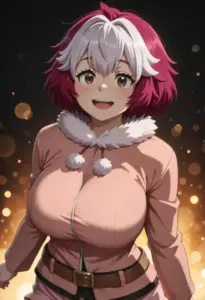Anime and cartoons are both animated forms of entertainment, but they are far from the same. For anime lovers and teenagers discovering the world of Japanese animation, it’s crucial to understand what sets these two apart. While both share the basic principle of animation, their origins, artistic styles, and themes differ greatly.
Anime Origins and Cultural Background
Anime is a product of Japan, and its storytelling and art are deeply influenced by Japanese culture. From the cityscapes of Tokyo to historical settings, anime frequently reflects the country’s customs, traditions, and social issues. On the other hand, cartoons typically originate from Western countries, especially the U.S. and Europe, with a more globalized cultural influence. Shows like SpongeBob SquarePants or Looney Tunes are classic examples of Western animation aimed at a broad audience.
While cartoons are often designed for children and adopt a more playful tone, anime can be both for children and adults. Series like Naruto or My Hero Academia appeal to teens, while anime like Attack on Titan tackles more mature and complex themes. This makes anime culturally rich, offering a wide range of genres and styles for every type of viewer.
Artistic Style and Animation Techniques
Anime has a distinct, recognizable art style that sets it apart. Characters in anime typically feature exaggerated expressions, large eyes, and unique hairstyles. The animation quality, while sometimes more static due to budget constraints, often focuses on intricate details in backgrounds and emotions. A single frame in anime can convey complex feelings or signify important plot developments, using color, music, and dramatic pauses to enhance storytelling.
In contrast, cartoons often prioritize smooth and fast animation, with simple, often exaggerated character designs aimed at humor. Cartoons are typically episodic, relying on slapstick comedy and bright colors to appeal to children. Shows like Adventure Time or The Simpsons are great examples of Western cartoons that use fast-paced humor and storytelling to entertain their audience.
Anime Themes and Storytelling Approach
Anime often dives deep into philosophical, psychological, and emotional themes. Series like Fullmetal Alchemist explore complex ideas such as morality, sacrifice, and the consequences of war. Even lighthearted anime like One Piece can take a serious turn, focusing on friendship, loyalty, and dreams. The depth of storytelling in anime is one of the reasons it appeals to teenagers and young adults.
Cartoons, by comparison, are generally lighter in tone. Shows like Tom and Jerry or The Fairly OddParents tend to focus on humor and simple morals. Although some modern cartoons explore deeper themes (Avatar: The Last Airbender being a notable example), they usually maintain a sense of whimsy and fun. Anime’s storytelling, however, is more varied, with arcs spanning several episodes or even seasons, making for more engaging, long-term viewing experiences.
Who Watches Anime?
One of the key differences between anime and cartoons lies in their target audience. While cartoons are typically aimed at younger audiences, anime has a broader demographic. There are anime genres specifically designed for teens (shonen), girls (shojo), and even adults (seinen). For example, Dragon Ball Z is aimed at younger male audiences, while Your Lie in April caters to fans of emotional, romantic narratives.
Cartoons usually focus on humor and short, standalone episodes. While series like Rick and Morty cater to an older demographic, the majority of cartoons remain lighthearted. Anime, with its variety of genres like action, fantasy, romance, horror, and sci-fi, provides a more diverse viewing experience, making it appealing to anime fans of all ages.
Why is Anime so Popular?
Anime has become a global phenomenon, reaching far beyond Japan’s borders. With the rise of streaming platforms, anime series are accessible worldwide, gaining a massive fanbase among teenagers. Anime conventions, fan art, and cosplay have become integral parts of youth culture. The influence of anime can even be seen in Western media, with shows like Teen Titans and The Legend of Korra adopting an anime-inspired art style.
Cartoons have their own place in global pop culture, with iconic shows like The Simpsons, Scooby-Doo, and Looney Tunes being beloved by audiences around the world. However, anime’s emotional depth and cultural storytelling have allowed it to carve a special niche in the hearts of fans, offering a uniquely immersive experience for viewers.
Historical Statistics for Anime and Cartoons
| Category | Anime | Cartoons |
|---|
| Origins | Anime originated in Japan in the early 1900s, with significant growth post-WWII (Astro Boy in 1963) | Cartoons have roots in the early 1900s, especially in the U.S. (Steamboat Willie in 1928) |
| First Major Series | Astro Boy (1963) | Steamboat Willie (1928), Looney Tunes (1930) |
| Global Revenue (2023) | $28.6 billion USD (Anime industry) | $244 billion USD (Global animation, including cartoons) |
| Average Production Cost per Episode | $100,000 – $300,000 USD | $200,000 – $500,000 USD |
| Longest-Running Series | Sazae-san (1969-present, 7,500+ episodes) | The Simpsons (1989-present, 700+ episodes) |
| Global Viewership (2023) | 120 million (anime streaming services, e.g., Crunchyroll) | The Simpsons (100+ million viewers globally) |
| Target Audience | Varied (Shonen, Shojo, Seinen, Kodomo) | Primarily children, but with some adult shows (Rick and Morty) |
| Popular Streaming Platforms | Crunchyroll, Funimation, Netflix | Netflix, Disney+, Cartoon Network |
| Cultural Impact | Deep influence on global pop culture, from art to fashion (e.g., cosplay, anime conventions) | Cartoons have influenced global humor and entertainment (Tom and Jerry, SpongeBob) |
Are there Waifus in Cartoons?
The concept of a “waifu” is deeply rooted in anime culture, whereas in cartoons, such a concept doesn’t hold the same significance or emotional weight.
Waifu in Anime
In anime, a waifu refers to a fictional female character that a fan has a deep affection for, often romanticized as a dream partner. The term originates from the Japanese pronunciation of the English word “wife,” and fans may emotionally connect with their favorite anime characters on a personal or intimate level.
Characters like Asuna from Sword Art Online or Rem from Re are popular examples of waifus in anime. This phenomenon is tied to anime’s unique storytelling, which often involves character development, emotional depth, and immersive relationships.
Waifus are not just beloved characters; they embody idealized traits such as loyalty, kindness, or strength, and anime often presents them in emotionally resonant storylines that engage fans on a more personal level. Anime fans may even collect figurines, fan art, and merchandise as an expression of their admiration for these characters.
Equivalent in Cartoons
In Western cartoons, the concept of a waifu is much less common. While fans may admire or enjoy certain characters (like Lois Griffin from Family Guy or Princess Bubblegum from Adventure Time), they are less likely to form the same kind of personal, romanticized connection. Western cartoons tend to focus more on humor, episodic content, and less on emotionally deep, long-term character development, which may explain the absence of a strong “waifu” culture.
What type of Waifu is Rogue from X-Men?
Rogue from X-Men could be classified as a tsundere waifu archetype, often found in anime and manga culture. This term refers to characters who are initially cold, distant, or tough but eventually reveal a warmer, more affectionate side as they develop closer relationships with others.
Why Rogue Fits the Tsundere Archetype:
- Tough Exterior: Rogue is portrayed as a strong and independent character, with a rebellious personality. Her powers, which prevent her from physically touching others, make her emotionally guarded and distant, especially in romantic situations.
- Hidden Vulnerability: Beneath her tough and sometimes aloof exterior, Rogue is a deeply compassionate person who longs for connection. Her inability to touch others without absorbing their powers or memories makes her crave emotional intimacy, yet she hides this vulnerability under a protective shell.
- Gradual Softening: As Rogue’s character develops, especially in her interactions with Gambit and other members of the X-Men, she shows moments of vulnerability and care. This fits the tsundere pattern, where a tough character reveals their softer side as their relationships grow deeper.
Though Rogue is a Western cartoon character, the emotional complexity and development she undergoes in various adaptations (comics, animated series, films) make her comparable to the waifu archetypes often seen in anime.
Anime vs. Cartoons – What’s Right for You?
In conclusion, anime and cartoons may both be forms of animation, but their differences in origin, art style, storytelling, and target audiences create distinct experiences. For anime lovers and teenagers, anime provides a vast and exciting world filled with complex characters, diverse genres, and emotionally rich narratives. Meanwhile, cartoons deliver humor, simplicity, and entertainment for all ages. Whether you’re drawn to the vibrant, intense world of anime or prefer the lighthearted fun of cartoons, both have something unique to offer in the realm of animation.

